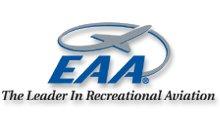Wed, Jun 23, 2010
FCC And FAA Rules On 121.5 MHz ELTs Just Don't Gibe
 EAA says the Third "Final Report And Order" from the FCC
concerning 121.5 MHz ELTs represents conflicting rules written by
two different federal agencies which will soon place pilots in a
precarious position - being in compliance with one but not the
other.
EAA says the Third "Final Report And Order" from the FCC
concerning 121.5 MHz ELTs represents conflicting rules written by
two different federal agencies which will soon place pilots in a
precarious position - being in compliance with one but not the
other.
On June 15 the Federal Communications Commission (FCC) published
in the Federal Register a change to 47 CFR Part 87 that will
"prohibit the certification, manufacture, importation, sale, or
continued use of 121.5 MHz emergency locator transmitters (ELTs)
other than the Breitling Emergency Watch ELT." Meanwhile, the FAA
in 14 CFR Part 91.207, stipulates that U.S.-registered civil
airplanes are required to have an approved automatic type emergency
locator transmitter in operable condition attached to the airplane.
The FAA does not specify either 121.5 or 406 MHz, but the
overwhelming majority of aircraft are equipped with 121.5 MHz
units, meaning they would be in violation of federal law when it
goes into effect 60 days after publication, or August 15, 2010.
EAA has joined an effort with other aviation associations to
prevent this action and is exploring all avenues of action to
address this rule before it goes into effect.
 "This regulatory change would impose a substantial and
unwarranted cost on general aviation," said Earl Lawrence, EAA vice
president of industry and regulatory affairs. "And this also
creates a burden for the GA community and those ground-based rescue
units that continue to use the 121.5 frequency to perform searches
and save lives. "At the very least the FCC action is being
conducted without properly communicating with the industry or
understanding the implications of its action," he added.
"This regulatory change would impose a substantial and
unwarranted cost on general aviation," said Earl Lawrence, EAA vice
president of industry and regulatory affairs. "And this also
creates a burden for the GA community and those ground-based rescue
units that continue to use the 121.5 frequency to perform searches
and save lives. "At the very least the FCC action is being
conducted without properly communicating with the industry or
understanding the implications of its action," he added.
The FCC rule also highlights the fact that threats to GA can
come from many different agencies, and that agencies outside of the
FAA do not necessarily understand the effects of their actions on
aviation. Both the 121.5 MHz and 406 MHz ELTs meet the FAA's
regulatory requirements if manufactured to the proper technical
standard order. While satellites no longer monitor the 121.5 MHz
frequency as of Feb. 1, 2009, the frequency is monitored by ATC,
the military, and other pilots.
More News
Have A Story That NEEDS To Be Featured On Aero-News? Here’s How To Submit A Story To Our Team Some of the greatest new stories ANN has ever covered have been submitted by our>[...]
Cleared For The Option ATC authorization for an aircraft to make a touch-and-go, low approach, missed approach, stop and go, or full stop landing at the discretion of the pilot. It>[...]
“...no entity, whether a division of government or a private company or corporation, may use information broadcast or collected by automatic dependent surveillance-broadcast >[...]
“While our traditional mechanical magnetos will be around for a long time, Hartzell Engine Tech acquired E-MAG to expand its PowerUP Ignition System product portfolio into bo>[...]
Flight Check A call-sign prefix used by FAA aircraft engaged in flight inspection/certification of navigational aids and flight procedures. The word “recorded” may be a>[...]
 ANN FAQ: Submit a News Story!
ANN FAQ: Submit a News Story! ANN's Daily Aero-Term (05.13.25): Cleared For The Option
ANN's Daily Aero-Term (05.13.25): Cleared For The Option Aero-News: Quote of the Day (05.13.25)
Aero-News: Quote of the Day (05.13.25) Aero-News: Quote of the Day (05.14.25)
Aero-News: Quote of the Day (05.14.25) ANN's Daily Aero-Term (05.14.25): Flight Check
ANN's Daily Aero-Term (05.14.25): Flight Check




